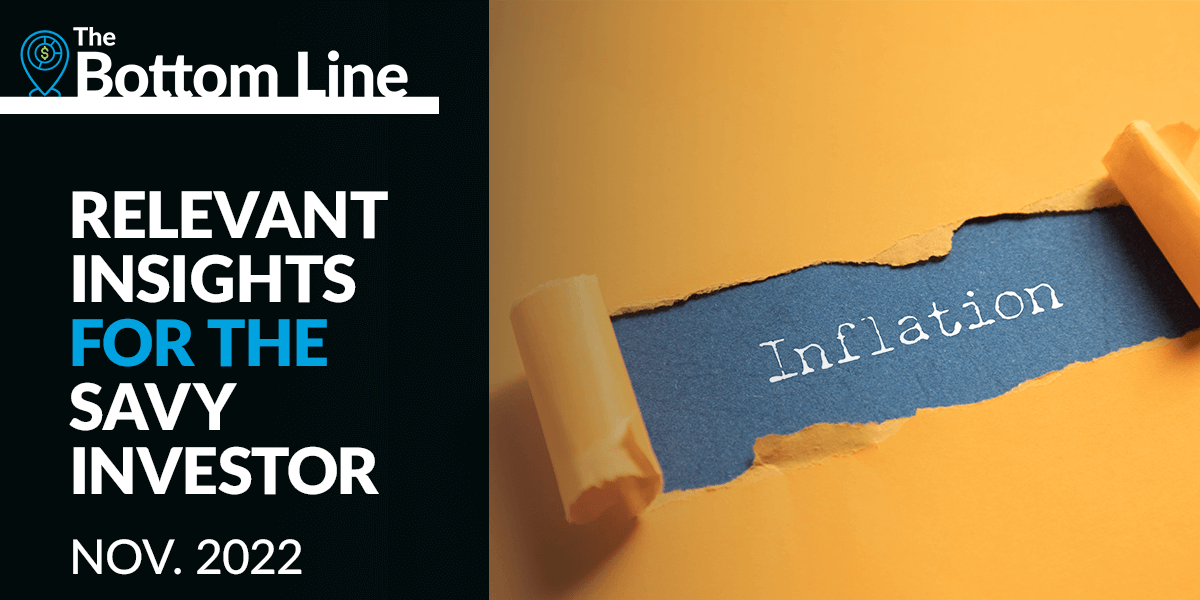

Although Inflationary Pressures Are Shifting, the Fed Remains Hawkish
The economy is at a decisive stage of the business cycle. For the past few years, it roared along at a pace well above the long-term average, initially due to a hefty dose of fiscal stimulus from the federal government and monetary stimulus from the Federal Reserve. Although much of that stimulus has since ended, the economy continues to perform well due primarily to the strong labor growth that has provided income for the unremitting consumption; the economy’s driving force, which is about 70% of GDP.
Along the way, inflationary pressures got out of hand (chart 1), to the surprise of the Fed, which forced the Fed to change monetary policy to become highly restrictive.
CHART 1: Consumer Price Index
% change, y-o-y, seasonally adjusted

Sources: Bureau of Labor Statistics, Federal Reserve, May 2023.
Information is subject to change and is not a guarantee of future results.
To combat the pricing pressures, the Fed quickly raised the federal funds rate, stopped buying bonds in the open market (quantitative easing), and eventually allowed bonds to mature out of the portfolio without reinvesting the proceeds (quantitative tightening). Combined, these moves are the most restrictive policy in several decades.
The source of the elevated inflation has shifted over time due to the legacy of the pandemic, making it difficult for the Fed to wage a strategy against it. Initially, inflation increased due to the lack of supply of many goods due to pandemic-related restrictions on production and transportation. That imbalance has since been corrected, and those pricing pressures have receded (chart 2).
CHART 2: Core PCE Price Deflator: Supply & Demand Drivers
% change, y-o-y, seasonally adjusted

Source: Bureau of Labor Statistics, April 2023.
Information is subject to change and is not a guarantee of future results.
Inflationary pressures have shifted and are coming from excessive demand (chart 2) due to the financial strength of households resulting from the robust labor market and a strong balance sheet. It has provided the wherewithal for the purchases of services that were not easily available during the pandemic. Some of the largest price increases are in services like airfares, hotels, restaurants and entertainment sectors. Consumers are willing to pay higher prices even if it means reducing some of the accumulated savings of the past few years (chart 3).
CHART 3: Personal Savings: “Extra”
$, trillions, aggregate increase over 2019 average

Source: Bureau of Labor Statistics, April 2023.
Information is subject to change and is not a guarantee of future results.
Some call this discretionary spending “Funflation,” as the excitement of these experiences outweighs their very high cost.
This behavior change is making it difficult for the Fed. Normally when prices rise, consumers shift spending away from discretionary spending by focusing purchases on expensive durable goods before their price moves out of range (automobiles are a good example). In doing so, the cost of discretionary goods/services falls, helping to bring down overall inflation. But that doesn’t appear to be happening this time around. Despite 500 basis points of Fed tightening, spending demand remains strong in many categories. The Fed is focused on the inflation rate of many of these services. It monitors a sub-section of inflation called “super-core,” which is service inflation without housing (shelter) costs, and it remains persistently high (chart 4).
CHART 4: Super-Core Inflation
% change y-o-y, not seasonally adjusted

Source: Bureau of Labor Statistics, Bureau of Economic Analysis, as of May 2023.
Information is subject to change and is not a guarantee of future results.
It is driven high by both sides of the spectrum; the high labor cost to provide the services and the growing demand.
The Fed believes the most effective way to reduce this inflation is to keep interest rates higher for longer, eventually reducing the demand. This resulted in the Fed increasing its year-end federal funds rate forecast by 50 basis points to 5.625%.
MARKET TRENDS
The S&P 500 is off to a very strong start this year, with the index up 14% YTD and 21% from its October low. However, the rally has been largely driven by a handful of growth sectors, and in particular a few large-cap technology stocks supported by enthusiasm over developments in artificial intelligence. Historically, new bull markets have seen greater participation, including from more economically sensitive value sectors. With recession risk still elevated, earnings disappointments ahead could fuel a renewed pullback in stock prices before a more sustainable recovery takes hold.
LABOR
The labor market remains resilient. After three consecutive monthly declines, job openings rose to 10.1 million from 9.7. The number of job openings is 2.5 million, higher than the highest reading before the pandemic.1
THE FED
At its recent meeting, the Fed held interest rates steady at the median rate of 5.125%, following ten consecutive rate increases. But it signaled two more hikes are likely this year.2
HOUSING
The housing sector appears to have caught a second wind following the sharp downtrend last year. This is especially true with new home sales since the inventory of existing homes remains severely limited.3
MANUFACTURING
The trend in manufacturing has been declining as depleted inventories have been replenished and consumer demand has shifted toward services and away from goods.4
INFLATION
At 4.0%, inflation is less than half the level of a year ago but remains twice as high as the Fed’s target rate of 2.0%. This will force the Fed to keep interest rates higher for longer..5
OIL
With the price of oil at $67.51/barrel, it is well below the 2022 average price of $94.57. Oil prices remain muted despite several well publicized production cuts from OPEC, due to lackluster demand.6
Sources
1. Bureau of Labor Statistics, April 2023
2. The Federal Reserve, CNR Research, June 2023
3. US Census Bureau, National Association of Realtors, June 2023
4. Institute for Supply Management, May 2023
5. Bureau of Labor Statistics, The Federal Reserve, May 2023
6. Bloomberg Energy, June 25, 2023
Index Definitions
The Consumer Price Index (CPI) measures the monthly change in prices paid by U.S. consumers.
The S&P 500 Index, or Standard & Poor’s 500 Index, is a market-capitalization-weighted index of 500 leading publicly traded companies in the US.
Important Information
The information presented does not involve the rendering of personalized investment, financial, legal or tax advice. This presentation is not an offer to buy or sell, or a solicitation of any offer to buy or sell any of the securities mentioned herein.
Any opinions, projections, forecasts and forward-looking statements presented herein are valid as of the date of this document and are subject to change.
Certain statements contained herein may constitute projections, forecasts and other forward-looking statements. Readers are cautioned that such forward-looking statements are not a guarantee of future results, involve risks and uncertainties, and actual results may differ materially from those statements. Certain information has been provided by third-party sources and, although believed to be reliable, it has not been independently verified, and its accuracy or completeness cannot be guaranteed.
All investing is subject to risk, including the possible loss of the money you invest. As with any investment strategy, there is no guarantee that investment objectives will be met, and investors may lose money. Diversification does not ensure a profit or protect against a loss in a declining market. Past performance is no guarantee of future performance.
Investing involves risk, including the loss of principal.
Non-deposit investment products are not FDIC insured, are not bank guaranteed and may lose value.
City National Rochdale is an SEC- registered investment adviser and a wholly-owned subsidiary of City National Bank. City National Bank provides investment management services through its sub-advisory relationship with City National Rochdale.
Non-deposit investment Products are: • not FDIC insured • not Bank guaranteed • may lose value
Stay Informed.
Get our Insights delivered straight to your inbox.
Put our insights to work for you.
If you have a client with more than $1 million in investable assets and want to find out about the benefits of our intelligently personalized portfolio management, speak with an investment consultant near you today.
If you’re a high-net-worth client who's interested in adding an experienced investment manager to your financial team, learn more about working with us here.
